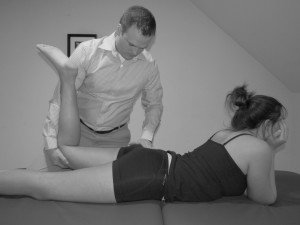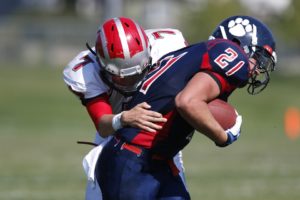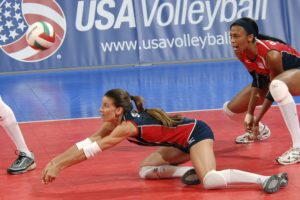Over the years I have treated many student athletes for about every injury and body part you could think of. A lot of them have been post-surgical ACL reconstruction, ankle surgeries, shoulder surgeries along with the typical sprains and strains of every body part. It is always fun because young adults tend to heal very well and they are motivated. Post-surgical therapy takes time because you have to let the body go through its normal processes of healing with the inflammatory response, swelling, early stages of movement and eventual strengthening. I always say you promote the healing process with therapy after surgery, you can’t force the healing process. You let the body do its job and we as therapist promote and guide the healing along for the most efficient recovery possible.
I have enjoyed post-surgical rehab but I find it quite simple at this time, and what I really enjoy is treating students that have not had surgery. I especially enjoy treating students that have back and neck pain that won’t go away or basically an injury to the spine. I often treat cases that have not responded to chiropractic care or have had physical therapy without much help and meds really haven’t done anything to help either. Why do I like these difficult cases so much? Honestly, I like them because they are not difficult cases at all, and as long as you make the right diagnosis, treat the problem correctly, the pain usually goes away very quickly. Again, young adults heal very well and if you treat with the appropriate manual therapy, they respond quite quickly. For example, I had a young lady not too long ago that injured herself in gymnastics doing a tumbling skill. She had pain in her low back into her left hip. She was walking with a limp and had a hard time standing upright. This went on for a month or two without much help. When she came to me all she needed was the appropriate manual therapy with corrections of a rotated sacrum along with abnormal rotations of her lumbar spine. These dysfunctions were not allowing her to walk upright and were causing her glute muscles to shut down. Because she is young she healed very fast after the appropriate treatment and a few exercises to engage the correct muscles. I saw her two visits. Another case was similar with a young student woke one morning with low back pain and hip pain that would not go away. He was actually recommended to have surgery on his hip. He came to me and also had rotations in his sacrum and lumbar spine along with some other dysfunctions present. He was back to normal after 6 visits. If he had not come to me who knows what the outcome would have been. Again he was recommended for surgery and all it really took was the correct diagnosis and treatment to fix him. Another example is a young man came to me after having pain in his shoulder and neck for years. He had many kinds of treatment and nothing helped. The problem was he had not had the appropriate manual therapy of his thoracic, cervical spine and shoulder. All he had was therapy utilizing strengthening exercises and stretching and chiropractic care many times without much help. Once I appropriately treated him with manual therapy his symptoms went away.
Next time your student athlete is having pain that won’t go away think about the type of treatment they have had. If they have not had good manual therapy then that may be the next step to take.
 Are you looking for physical therapy or a physical therapist in Newark, Granville, or Pataskala, OH? If you answered yes to this, then you have come to the right place. Dr. Dan Wright is a Doctor of Physical Therapy and a physical therapist in the Newark, Granville, and Pataskala, OH area. He is a specialist in relieving pain and improving movement problems, and he can help you return to the activities you enjoy. Call us today to schedule an appointment 740-707-0354 or to answer any questions you may have. Thank you.
Are you looking for physical therapy or a physical therapist in Newark, Granville, or Pataskala, OH? If you answered yes to this, then you have come to the right place. Dr. Dan Wright is a Doctor of Physical Therapy and a physical therapist in the Newark, Granville, and Pataskala, OH area. He is a specialist in relieving pain and improving movement problems, and he can help you return to the activities you enjoy. Call us today to schedule an appointment 740-707-0354 or to answer any questions you may have. Thank you.

